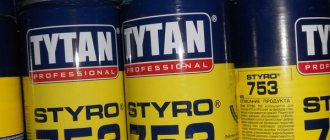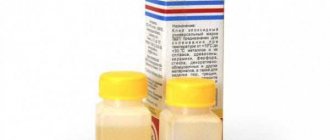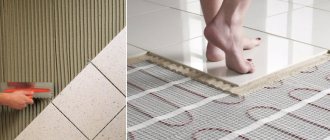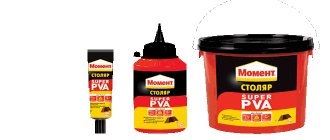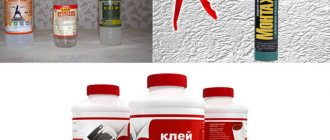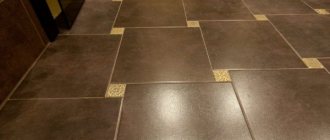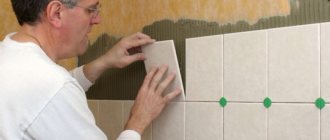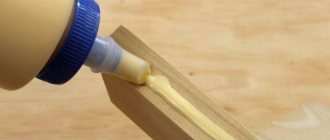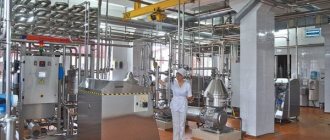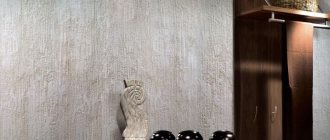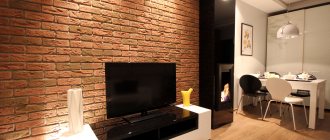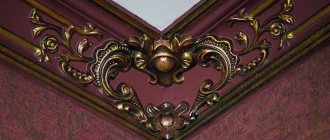Polystyrene foam (expanded polystyrene) is used in repair and construction. It is environmentally friendly and is used for thermal insulation. Properly selected adhesive for polystyrene foam will reliably bond it to any surface and extend the service life of the insulating structure.
Even a beginner can work with glue at home. Polystyrene foam can be glued to metal, wood, concrete, plastic, and connected to each other. Often attached to the ceiling in the form of ceiling skirting boards and tiles.
The concept of polystyrene foam: application of the material
The white material with a cellular structure is commonly called foam plastic. It is produced by foaming plastic masses, so it consists of 98% air. Micropores located throughout the entire area of the material are isolated from each other, so the raw material has thermal insulation characteristics. Polystyrene foam is considered an environmentally friendly material; it has a long shelf life and does not ignite without a fire source. Light weight and low cost are the main advantages of this material.
Experienced craftsmen know how to glue foam plastic, so they use it in the following areas:
- insulation of buildings;
- production of refrigerators;
- protection against freezing of various communications;
- roof insulation;
- use for finishing purposes.
Foam material is often used to insulate houses Source 999111.ru
Foam plastic is used for finishing ceilings, walls and other surfaces. It is easy to paint, dries quickly, and does not crack. Cut the material using a sharp stationery or construction knife. It is often used as a base for preparing glue, paint or varnish for concrete or wood.
Advantages of polyurethane glue
Polyurethane adhesives cure much faster than traditional adhesives. Thanks to this, a construction company can glue insulation in one day, then install dowels, lay and putty the reinforcing mesh.
Interestingly, people who decide to use a traditional adhesive solution will have to spend at least four days completing these steps.
Polyurethane adhesives for foam plastic are very economical, because one package can be enough for even 8 m2 of insulation. Trying to compare with the traditional method, using a whole bag of adhesive solution, we can only cover 5 m2 of insulation.
A significant advantage of polyurethane adhesive is that it allows work to be carried out in an extremely wide range of climatic conditions, at high relative humidity and at low temperatures - use temperatures from 0 to + 40 ° C, as well as air. Humidity may exceed 90%.
Ceresit foam adhesive has excellent adhesion, much better than with a traditional adhesive solution. It can be used successfully on mineral substrates as well as on substrates such as metal, plastic or wood.
Due to its unique structure and content of hydrophobic agents, polyurethane adhesive for polystyrene is a product with very low water absorption.
How foam is glued to different surfaces
Depending on the type of work, foam plastic is glued to various surfaces. For example, when fixing to concrete walls, specialists use special foam. Since concrete walls are quite cold, they require insulation, and this material is ideal for this role. Foam glue is suitable when working with brick walls. This composition is a dry mixture, which the master subsequently dilutes with water. Dry mixtures are inexpensive and have low consumption. The specialist applies the finished composition to the wall or to a sheet of material, and the slabs themselves are glued from bottom to top.
Dry construction mixtures are used for gluing Source obystroy.ru
You can use polystyrene foam glue or PVA construction adhesive. It perfectly fixes the material on metal surfaces. First, burlap is impregnated with this composition, applied to a metal surface and waited for drying. As soon as the layer has dried, fix the foam material. In order for the slab to better adhere to the base, after applying it, it is pressed against the wall. At this time, the glue increases its thickness, and the specialist glues the next slab.
Review of glue from different manufacturers
There are a lot of foam glues on store shelves and they come from different manufacturers. However, consumers identify only the four most popular brands: Master, Knauf, Ceresit and Titan.
Table 1 Comparison of popular adhesive mixtures for foam plastic
| Brand | View | Application temperature | Consumption | Price |
| Ceresit | Adhesive foam | From -10°С to +40°С | Cylinder for 6–10m2 | 500 rub. per cylinder |
| Ceresit | Dry mix for fastening | Not lower than 0°C | 6 kg/m2 | Bag 25 kg – 350 rub. |
| Ceresit | Reinforcing | From +5 to +30°С | 5 kg/m2 | 25 kg – 400 rub. |
| Ceresit-Moment | Dry mix | +5°С/+30°С | 5.5–6.5 kg/m2 | 25 kg – 250 rub. |
| Knauf-Klebespachtel | Dry mix | From +5°С | 8 kg/m2 | 25 kg – 250 rub. |
| Master-Termol | Dry mix for fastening | From -5°С to +30°С | Up to 5 kg/m2 | 25 kg – 230 rub. |
| Master-Super | Reinforcing | +5°С/+50°С | 5 kg/m2 | 25 kg – 250 rubles |
| Tytan Styro 753 | Aerosol | From 0°С to +30°С | 10 m2 | 400 rub. per cylinder |
How to glue polystyrene foam
Extruded polystyrene foam is a separate type of material, similar to polystyrene foam, but with its own differences. This is a synthetic board raw material that is produced by foaming a polymer composition at the time of extrusion. 95% of polystyrene foam consists of air. The material is light and perfectly retains heat, and also absorbs sounds.
Regular polyurethane foam is suitable for fixation Source vikbud.ua
See also: Catalog of companies that specialize in finishing and paintwork materials
Expanded polystyrene is used to decorate the walls inside and outside the house. Polystyrene adhesive comes in different forms:
- polyurethane - suitable for gluing the material to concrete, stone, wood, brick, metal, expanded clay, plaster;
- adhesive foam – resistant to moisture and aging, used for insulating facades from the outside;
- cement-mineral - available in dry or ready-made form, resistant to frost, therefore used for insulating the external wall;
- based on modified bitumen - suitable for fixing the material on brick, metal, stone and wood, relevant for outdoor work.
Before using the adhesive, the slabs are cleaned of debris, and the walls are prepared for work - dust and dirt are removed. Then glue is applied to the slab, pressed tightly against the wall and left for several minutes. The plate is released, meanwhile the glue sets, so the master can already work with the next polystyrene plate.
Types of adhesives for foam plastic
There are two options for foam adhesives, namely with 1 or 2 components.
One-component polyurethane adhesives create a very strong bond. They dry better from moisture and can be used, for example, for laying quartz vinyl and other floor coverings.
Two-component polyurethane adhesives consist of a resin and a hardener. In addition to bonding wood, stone and plastic, these adhesives can also smooth out any uneven surfaces and fill voids or cracks.
According to the shape of the substance, foam, sealants and resin are distinguished:
- Polyurethane Foam: Foam suitable for sealing or insulating window frames, regular and flexible tiles. This foam can bond to various types of materials such as concrete, brick, metals, PVC, wood and concrete;
- Polyurethane Resin: A durable, water-resistant polyurethane adhesive that can be used to glue panels or hold wood and other materials together, and that can be combined with metal, drywall, plastic, and concrete;
- Polyurethane Sealant: This type of professional adhesive has a very strong bond and can be used to attach parts and objects to plastic and metal surfaces.
How to glue foam together
It has already been found out how to glue foam plastic to other types of surfaces, but fixing two identical sheets also has its own nuances.
Polymer adhesives are suitable for fixing sheets together Source sevparitet.ru
There are several compounds that help with fastening:
- Liquid nails are a strong composition, so specialists connect the parts as smoothly as possible.
- Polyurethane spray - sprays evenly onto the slab and sets quickly.
- Professional glue – ensures a strong seam.
- PVA is the most affordable option, suitable for interior decor.
- Polyurethane foam – fixation occurs within 40-60 minutes.
Before gluing the foam together, builders clean the material from dust and wipe it with a dry rag. Next, prepare the walls, making them smooth and uniform. Two slabs of polystyrene foam are covered with glue and fixed one by one on the wall. Press down a little and wait until the solution sets. The optimal time that craftsmen use to press the slabs is 60 seconds, then the material is left to dry.
Using foam glue
Polyurethane adhesives are suitable for bonding as well as for filling voids and cracks. You can use this adhesive to fill holes left by peg holes in wood planks, or to strengthen structural parts made of foam and other materials.
Always check the packaging instructions to ensure you have the most suitable product on hand for your project.
You will need:
- Polyurethane glue;
- A large plastic container and several wooden chopsticks;
- Putty knife;
- Clamp.
The following step-by-step guide explains how to glue and fill cracks with polyurethane adhesive. The amount of product and drying time may vary depending on the adhesive used, so be sure to read the product description carefully before starting.
Prepare surfaces: they must be free of dust, dirt or grease. Dry them well. Prepare the glue components: pour two portions of resin and the same amount of hardener into a container.
Mix the glue components. Mix the parts thoroughly with wooden sticks until the mixture becomes a paste. Fill the hole or gap. Press the polyurethane adhesive into the empty space with a putty knife.
If you want to glue a piece of wood to foam, apply a thin layer of polyurethane adhesive to both surfaces. Press the parts together and hold them together for at least 3 hours, using a clamp or heavy object if necessary. After 24 hours the adhesive will reach maximum adhesion strength.
- Polyurethane adhesive in foam cans can be in the form of foam. The can is installed on the corresponding mounting guns.
- Working with such equipment for fastening polystyrene foam boards is much faster than with traditional adhesive mortar.
The person doing the insulation does not have to prepare the solution because polyurethane foam is a ready-to-use product that reduces the time required to install polystyrene foam boards. Here we have collected for you additional information about polystyrene adhesive.
Foam plastic as a basis for adhesives
A strong adhesive is made from polystyrene foam or expanded polystyrene to hold surfaces together. This composition can also be used as a paint or protective varnish. Based on small, light balls, the adhesive solution is strong and reliable.
Foam material produces a powerful fixing mixture Source i1.wp.com
Polystyrene foam adhesive
This solution has good adhesive properties and is used in the following cases:
- for sealing cracks and joints in the roof;
- for gluing interior items;
- for decoration of household products;
- for fixing ceiling plinths;
- for joining individual pieces of polystyrene foam.
Styrofoam glue becomes a lifesaver when there is no construction adhesive nearby. Experts make it themselves. They take a solvent such as xylene, acetone or gasoline. Gasoline dissolves foam perfectly, so it is considered the optimal component for glue. Then take pieces of polystyrene foam or expanded polystyrene: the larger they are, the more viscous the finished solution is. Polystyrene foam is gradually placed in a jar of solvent and the workpiece is stirred. As soon as the glue is ready, it is immediately used for its intended purpose.
The solvent instantly corrodes the foam Source mauro-gianvanni.ru
This composition is not stored for a long time, so it must be used immediately. Glue is applied to the surface and the desired material is glued. Experts make sure that there are no smudges on the product: ingrained composition is very difficult to wipe off after it dries.
Which polyurethane glue to choose
Polyurethane adhesive for polystyrene with Tytan logo is recommended. Professional adhesive is intended for gluing polystyrene foam boards when insulating the external walls of buildings, both new and subject to thermal repair in thermal insulation systems.
- The glue is very convenient to apply, and thanks to its use, the installation of polystyrene foam boards is greatly simplified.
- Tytan Eos polyurethane adhesive for polystyrene demonstrates excellent adhesion to typical building materials.
- In addition, it has good adhesion to various types of bitumen membranes used in insulation.
- The Ceresit company, which offers CT 84 Express polyurethane adhesive, can be proud of its properties.
- The adhesive is a low pressure material that does not cause the adhesive to swell when attaching the insulating plates.
A significant advantage regarding the properties of cementitious adhesives is the fact that the deformation of the polyurethane adhesive during the gluing process does not damage the adhesive structure.
We take into account the characteristics of foam plastic before gluing
The characteristics and positive aspects of polystyrene foam have made it one of the most popular materials for insulation. It is very cheap, has an excellent thermal conductivity coefficient, is not afraid of moisture and is light in weight. He's not even afraid of mold. And the service life is about 30 years. Foamed polystyrene foam has a lot of air in its structure. This is what guarantees good sound and heat insulation qualities. In addition, the weight of the foam sheet is small. Thanks to this, it can be glued to the surface.
When choosing an adhesive composition for polystyrene foam, it is important to take into account the following nuances:
- The glue should not contain solvents such as gasoline, acetone, etc. Why? Upon contact with the material, they react and simply “burn through” the foam. It's like throwing a sugar cube into water. He will melt.
- It is worth paying attention to where exactly the insulation work is being carried out. For external use you will need one type of glue, and for internal use a completely different one.
- The covering surface itself is also important. It could be a wooden wall, metal covering or concrete. The adhesive may be different for each material.
- To glue the sheets to each other, a dry or wet type composition is selected. Then the quality of the glued elements will be better.
Given this information, you can consider the existing types of adhesive compositions for foam plastic.
Bitumen adhesive Bitumast
Bitumast mastic is similar in properties to a plaster-adhesive mixture, but includes bitumen, which plays a binding role. The advantage of the glue is its excellent compatibility with extruded polystyrene foam; it adheres to the material for a long time without any complaints. The product also has waterproofing properties and protects the joints of external walls from moisture.
You can easily mix Bitumast, it takes a couple of minutes, you don’t need any special tools (you don’t even need a mixer). There is also no need to warm up Bitumast before use. The consistency is liquid, so apply in a thin layer. There is a significant disadvantage - the mastic sets slowly, and you will have to keep the EPP sheets from slipping for a long time.
Consumption per square meter.
Calculation of consumption per square meter is necessary to determine the required amount of material for purchase. It is not possible to calculate the exact amount. It is influenced by factors such as
- Material, its density and absorbency;
- consumption of a specific type and brand of formula.
The averages are shown in the table below.
| Composition type | Consumption |
| Dry | 500 g/m² |
| Bitumen | 800-1000 gr. / m² |
| Polyurethane | 1 can per 8 – 10 m² |
The most important thing is to carefully and efficiently clean the surface from dirt and small dust particles. To do this, you can use a dry, clean cloth or viscose rag. Pre-treatment will allow the glue to work well, and the effect will be durable and strong.
Selecting adhesive for extruded polystyrene foam
How to glue polystyrene foam? To fasten the slabs, you can use different means that have different components. But there are specifics to using mixtures. So, it is better to use one for gluing to a concrete base, another for attaching to a brick wall, and another for winter work. There are adhesives that combine the properties of fastening material and insulation and have low thermal conductivity.
Before purchasing, it is important to clarify that the product contains no substances that corrode polystyrene foam. This:
- acetone;
- alcohol substitutes;
- toluene;
- esters;
- other solvents.
The ideal option is to purchase specialized formulations, because their manufacturers have already taken into account all the important points. There are three main types of products that are suitable for gluing material. This is a plaster-adhesive mixture of different brands, polymer adhesives and bitumen glue (mastic).
People often use “liquid nails” in a bottle, silicone sealants, frost-resistant tile adhesives, drywall and tile products for gluing materials. Can I use them? Experts say that the use of such adhesives is possible, especially if additional fastening of the structure with dowels is planned. But the cost of the work can be much higher, so it is better to buy products designed for XPS.
Characteristics of the material and indications for gluing
Among the offers of the specialized market, with the help of specialist recommendations, it is easy to choose the current option for effectively gluing foam plastic together. Polystyrene foam - foamed plastic - is made on the basis of various building polymers in the form of polystyrene, polyurethane, polyvinyl chloride, polyethylene. The material is characterized by low specific density and impressive heat resistance parameters. These properties are due to the fact that the cellular structure provides an air mass of 98% of the total volume.
Foamed polymers are relevant in the manufacture of finishing resources, insulators, and packaging products. Modern technologies also make it possible to use foam plastic as structural materials. Decorative elements for the interior and exterior are cast from it, packaging for furniture, technical equipment and food products is produced, and structural panels are produced.
Installation of foam plastic products is carried out mainly using the technology of gluing elements. This allows you to create a monolithic structure in which surface integrity defects are excluded.
The mechanical method of connection suffers from the possible formation of cracks, cold bridges or other hidden problems, while when gluing foam elements together, any threats of this kind are neutralized.
The best adhesive models
In this paragraph, we will consider the main factors that will influence the choice of polyurethane foam for insulation - this is the price, respectively, the quality of the adhesive foam and the method of its application.
ANSERGLOB BCX 39
ANSERGLOB BCX 39 is one of the most universal options - a cement-polymer adhesive for penoplex based on a mixture of special cement and glue. Used for installation on concrete, brick, cinder block surfaces. Suitable for both internal and external work. The composition is as follows: Portland cement, plasticizer and some functional additives. When you apply this solution, be sure to deep prime the surface.
Aqualit SK-106P
Aqualit SK-106P has the same characteristics as the previous mixture, but is more reliable and is suitable only for external use.
Dry building mixture "Master Super". This mixture can be used to insulate load-bearing structures, both outside and inside the building. Before use, be sure to dilute with a small amount of water and apply a small layer onto the extruded polystyrene foam with a spatula.
TechnoNIKOL adhesive foams, Ceresit CT 84, TytanStyro 753. These foams are almost identical in their composition and properties. Approximately a small cylinder replaces 25 kilograms of dry cement mixture, which is enough to finish 8-10 square meters of almost any surface. The application method is the same as for mounting foam - using a mounting gun, with the balloon facing up, you need to apply a small amount of foam. The foam sets in about 10-15 minutes, after which there is no need for secondary expansion.
TechnoNIKOL
CT84
TytanStyro 753
Separately, you should consider Styro 753 foam. This foam is poisonous, so you should protect exposed skin and it is advisable to work in a respirator, avoid getting the foam in your eyes. This foam is applied in the following way - approximately 2-4 centimeters are retreated from the edge of the polystyrene foam slab and then it should be applied diagonally to the slab. The plate should be pressed and not released for about 10 minutes until the foam sets. However, if the gap between the slab and the surface that needs to be insulated is more than 2 millimeters, then it is better to use the foams given above.
Aerosol products
Aerosol adhesive is characterized by fast setting and ease of practical use. As a rule, it is used when working with a small volume of finishing or building materials, when for some reason it is not possible to use other compounds. The product is applied to the surface of polystyrene foam by spraying, after which the sheets are pressed and left for 30 minutes until completely dry. After this period, a reliable degree of fixation of materials is expected.
Sometimes during installation or finishing work it becomes necessary to connect extruded polystyrene foam or regular foam. In this case, the same adhesive solutions or mixtures are used, but with certain nuances:
- the glossy coating of the foam base is processed with a needle roller to increase adhesion characteristics, after which the adhesive mass is applied;
- the foam balls are covered or joined with long-fiber paper.
Otherwise, the connection process is similar to the recommendations described above.
How to properly glue polystyrene foam
Before proceeding with the installation of PPS slabs, it is necessary to evaluate the quality of the surface.
If there are differences and irregularities
You will need to use a primer and putty any existing flaws. Make sure that the composition of the putty mixture will not conflict with the adhesive.
Requires cleansing of previous deposits
Oil-based paint, mold, rust, salt and grease deposits all reduce the adhesive properties of the surface.
Experts advise conducting a test to check the adhesive abilities of the working surface. You will have to sacrifice one slab, cutting it into cubes measuring 10x10 cm, and gluing them in various places where thermal insulation is planned. Tear them off after 72 hours - if the base of the cube along with the glue remains in place, and only pieces of polystyrene foam come off, you can begin installation in full.
Once you have eliminated all sorts of shortcomings and conducted a test, and everything you need has already been purchased, you can begin.
If you have chosen polyurethane foam adhesive as a fastening element, all that remains is to apply it to the slabs and glue it using a level. Apply glue in the following ways:
- envelope;
- five parallel lines along the width of the slab;
- a rectangle encircling the contour of the slab, complemented by a zigzag inside or a horizontal line.
And those who decide to work with dry mixtures will have to sweat a little. First you need to mix the solution in accordance with the manufacturer's instructions.
Various methods of applying glue to PPS
This glue can be applied in several ways:
- beacon - recommended for wall differences of up to 1.5 cm. Stepping 2 cm from the edges, draw lines along the perimeter of the plate, scatter 5-8 points of contact in the center and on the remaining area, 10 cm in diameter and 2 cm thick;
- striped - stripes 5-6 cm wide are applied at each edge of the slab with 2 cm indentations from the edges, and a horizontal line is drawn along the slab;
- continuous coating with mortar, with differences up to 0.5 cm.
The thickness of the strokes should be at least 2 cm, width 5-8 cm, maintaining a 2-3 cm distance from the edges. To avoid air locks, it is necessary to leave gaps between the strips applied along the contour of the polystyrene foam board. After pressing, the mixture should be distributed over the slab and occupy at least 40% of the area.
Once the adhesive is applied to the insulating boards, they are installed end-to-end in the design position, leaving no gaps. The permissible distance between the plates is 2 mm. If the gaps are large, they need to be filled.
Plastic dowels or umbrellas are not the main means of fastening; they are used as a supplement. They are inserted into polystyrene foam after the foam or solution has completely dried, leaving the cap flush with the surface of the slab. The rod must penetrate the solid layer of the wall, not counting the plaster, at least 4 cm.
